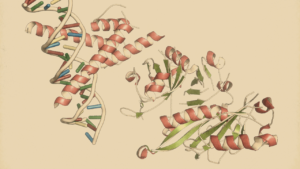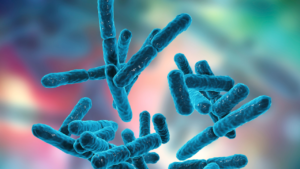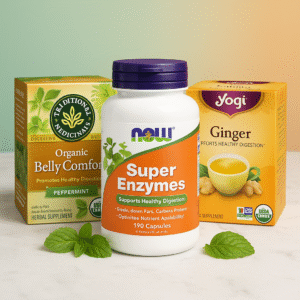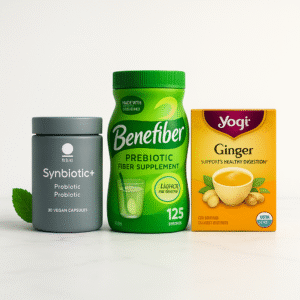5 Findings of Intrinsic Dietary Fibers for Better Health
Explore how intrinsic dietary fibers impact gut health and overall wellness. Delve into the benefits in this insightful article.

In recent years, intrinsic dietary fibers have emerged as pivotal components in promoting better health.
These fibers, integral to the plant cell matrix, play a crucial role in enhancing gut microbiome diversity, thereby improving overall gut health.
As we delve deeper into their complex structure, the importance of fiber digestibility and the impact of food processing becomes evident.
This article will explore five key findings about intrinsic dietary fibers, shedding light on their health benefits, contribution to nutrient absorption, and role in microbial fermentation.
We will also discuss how these fibers, as functional foods, fit into plant-based nutrition, offering a comprehensive understanding of their significance in our diets.

Main Findings
- Dietary fibers significantly impact human health, especially via the gut microbiome.
- Fibers in their natural form within plant cell matrices (intrinsic fibers) may have different and potentially greater health benefits than isolated fibers.
- Food processing can substantially alter the structure of intrinsic fibers, affecting their health benefits.
- The complexity of fiber structures contributes to diverse physicochemical properties like solubility, bulking, viscosity, and fermentability.
- Intrinsic fibers in plant cells are entangled in a complex network, impacting how they are digested and fermented by gut microbes.
- The breakdown and physiological behavior of intrinsic fibers differ from that of their isolated counterparts due to their complex natural form.
Introduction
In recent years, the focus on human health has shifted towards the impact of our diet, and a key player in this arena is dietary fiber.
These indigestible components found in plant foods have gained recognition for their remarkable potential in reducing mortality rates and safeguarding against ailments like cancer, type 2 diabetes, and heart diseases A Trusted Source
Reynolds A, Mann J, Cummings J, Winter N, Mete E, Te Morenga L. Carbohydrate quality and human health: a series of systematic reviews and meta-analyses. Lancet (2019) 393:434–45. doi: 10.1016/S0140-6736(18)31809-9 PubMed Abstract CrossRef Full Text Google Scholar.
Interestingly, the significance of dietary fibers was highlighted as far back as the 1960s by Denis Burkitt, who proposed the dietary fiber hypothesis linking them to various diseases prevalent in Western societies A Trusted Source
Cummings J, Engineer A. Denis Burkitt and the origins of the dietary fibre hypothesis. Nutr Res Rev (2017) 31:1–15. doi: 10.1017/S0954422417000117 PubMed Abstract CrossRef Full Text Google Scholar.
Initially, the benefits of dietary fibers were believed to be largely independent of gut microbiota.
Physical properties such as water retention for increased stool bulk and bile-acid binding to lower cholesterol levels were the main drivers.
However, the last 25 years have seen a revolution in our understanding A Trusted Source
O’Keefe SJ. The association between dietary fibre deficiency and high-income lifestyle-associated diseases: Burkitt’s hypothesis revisited. Lancet Gastroenterol Hepatol (2019) 4:984–96. doi: 10.1016/S2468-1253(19)30257-2 PubMed Abstract CrossRef Full Text Google Scholar.
Since human enzymes cannot break down dietary fibers, they reach the lower gut, where the gut microbiota, mainly consisting of colon-dwelling bacteria, utilize them A Trusted Source
Flint HJ, Scott KP, Duncan SH, Louis P, Forano E. Microbial degradation of complex carbohydrates in the gut. Gut Microbes (2012) 3:289–306. doi: 10.4161/gmic.19897 PubMed Abstract CrossRef Full Text Google Scholar.
This microbial activity generates essential compounds, notably short-chain fatty acids (SCFA), which play a pivotal role in the microbiota-driven effects of fibers A Trusted Source
Canfora EE, Jocken JWE, Blaak EE. Short-chain fatty acids in control of body weight and insulin sensitivity. Nat Rev Endocrinol (2015) 11:577–91. doi: 10.1038/nrendo.2015.128 PubMed Abstract Cross Ref Full Text Google Scholar A Trusted Source
Venegas DP, de la Fuente MK, Landskron G, González MJ, Quera R, Dijkstra G, et al. Short chain fatty acids (SCFAs)-mediated gut epithelial and immune regulation and its relevance for inflammatory bowel diseases. Front Immunol (2019) 10:2019.00277. doi: 10.3389/fimmu.2019.00277CrossRef Full Text Google Scholar.
These effects can range from local interactions within the gut, impacting epithelial and immune cells, to distant effects on other organs A Trusted Source
Blaak EE, Canfora EE, Theis S, Frost G, Groen AK, Mithieux G, et al. Short chain fatty acids in human gut and metabolic health. Benef Microbes (2020) 11:411–55. doi: 10.3920/BM2020.0057PubMed Abstract CrossRef Full Text Google Scholar.
Consequently, manipulating gut microbiota through fiber intake opens new therapeutic possibilities.
Researchers are now investigating various fiber types to uncover their specific effects on health A Trusted Source
Deehan EC, Yang C, Perez-Muñoz ME, Nguyen NK, Cheng CC, Triador L, et al. Precision microbiome modulation with discrete dietary fiber structures directs short-chain fatty acid production. Cell Host Microbe (2020) 27:389–404.e6. doi: 10.1016/J.CHOM.2020.01.006PubMed AbstractCrossRef Full TextGoogle Scholar.
This research aims to dissect the intricate fiber-microbiota interactions and unravel the molecular intricacies responsible for different health outcomes A Trusted Source
Fransen F, Sahasrabudhe NM, Elderman M, Bosveld M, El Aidy S, Hugenholtz F, et al. β2→1-fructans modulate the immune system in vivo in a microbiota-dependent and -independent fashion. Front Immunol (2017) 8:154. doi: 10.3389/fimmu.2017.00154PubMed AbstractCrossRef Full TextGoogle Scholar A Trusted Source
Beukema M, Faas MM, de Vos P. The effects of different dietary fiber pectin structures on the gastrointestinal immune barrier: impact via gut microbiota and direct effects on immune cells. Exp Mol Med 2020 529 (2020) 52:1364–76. doi: 10.1038/s12276-020-0449-2CrossRef Full TextGoogle Scholar.
However, current research tends to examine fibers in isolation, neglecting their natural form as part of whole, minimally processed foods A Trusted Source
Eastwood MA, Kay RM. An hypothesis for the action of dietary fiber along the gastrointestinal tract. Am J Clin Nutr (1979) 32:364–7. doi: 10.1093/AJCN/32.2.364 PubMed AbstractCrossRef Full TextGoogle Scholar A Trusted Source
Mozaffarian D, Rosenberg I, Uauy R. History of modern nutrition science–implications for current research, dietary guidelines, and food policy. Br Med J (2018) 361:k2392. doi: 10.1136/bmj.k2392 CrossRef Full TextGoogle Scholar.
This article emphasizes the need for a holistic understanding of dietary fibers to fully harness their potential in modulating gut microbiota for improved health.
It delves into the natural existence of dietary fibers, highlighting how this perspective differs from current approaches.
Additionally, it explores existing studies on intrinsic fibers' impact on human health and discusses potential directions for future research A Trusted Source
Reynolds A, Mann J, Cummings J, Winter N, Mete E, Te Morenga L. Carbohydrate quality and human health: a series of systematic reviews and meta-analyses. Lancet (2019) 393:434–45. doi: 10.1016/S0140-6736(18)31809-9 PubMed AbstractCrossRef Full TextGoogle Scholar.
Dietary Fiber and the Gut Microbiome
Dietary fibers encompass a diverse group of polymers with distinct chemical structures, including various sugar molecules like glucose, xylose, mannose, galactose, arabinose, and rhamnose.
These sugars form linear or branched structures with different glycosidic bonds, some decorated with phenolic acids or linked to other compounds A Trusted Source
Louis P, Solvang M, Duncan SH, Walker AW, Mukhopadhya I. The impact of nutrition on the gut microbiome dietary fibre complexity and its influence on functional groups of the human gut microbiota. Proc Nutr Soc (2021) 80:386–97. doi: 10.1017/S0029665121003694 CrossRef Full TextGoogle Scholar A Trusted Source
Li C, Hu Y, Zhang B. Plant cellular architecture and chemical composition as important regulator of starch functionality in whole foods. Food Hydrocoll (2021) 117:106744. doi: 10.1016/J.FOODHYD.2021.106744 CrossRef Full TextGoogle Scholar.

For example, inulin and starch consist of linear repetitions of single molecules (fructose and glucose monomers, respectively), while rhamnogalacturonan, a type of pectin, is highly branched with various side-chains A Trusted Source
Zdunek A, Pieczywek PM, Cybulska J. The primary, secondary, and structures of higher levels of pectin polysaccharides. Compr Rev Food Sci Food Saf (2021) 20:1101–17. doi: 10.1111/1541-4337.12689 PubMed AbstractCrossRef Full TextGoogle Scholar.
Their common feature is resistance to digestion by human endogenous enzymes.
The extensive structural variation among dietary fibers leads to physicochemical properties often categorized as "soluble versus insoluble." However, this classification is based on fiber content analysis rather than functional behavior in the human gut A Trusted Source
McRorie JW, McKeown NM. Understanding the physics of functional fibers in the gastrointestinal tract: an evidence-based approach to resolving enduring misconceptions about insoluble and soluble fiber. J Acad Nutr Diet (2017) 117:251–64. doi: 10.1016/j.jand.2016.09.021PubMed AbstractCrossRef Full TextGoogle Scholar A Trusted Source
Williams BA, Mikkelsen D, Flanagan BM, Gidley MJ. “Dietary fibre”: moving beyond the “soluble/insoluble” classification for monogastric nutrition, with an emphasis on humans and pigs. J Anim Sci Biotechnol (2019) 10:45. doi: 10.1186/s40104-019-0350-9 PubMed AbstractCrossRef Full TextGoogle Scholar.
A more informative approach considers properties like bulking, viscosity, and fermentability A Trusted Source
So D, Gibson PR, Muir JG, Yao CK. Dietary fibres and IBS: translating functional characteristics to clinical value in the era of personalised medicine. Gut (2021) 70:2383–94. doi: 10.1136/gutjnl-2021-324891 PubMed AbstractCrossRef Full TextGoogle Scholar.
Gut microbiota fermentation of these fibers relies on a set of enzymes capable of breaking down specific chemical linkages and molecules A Trusted Source
Flint HJ, Scott KP, Duncan SH, Louis P, Forano E. Microbial degradation of complex carbohydrates in the gut. Gut Microbes (2012) 3:289–306. doi: 10.4161/gmic.19897PubMed AbstractCrossRef Full TextGoogle Scholar A Trusted Source
El Kaoutari A, Armougom F, Gordon JI, Raoult D, Henrissat B. The abundance and variety of carbohydrate-active enzymes in the human gut microbiota. Nat Rev Microbiol (2013) 11:497–504. doi: 10.1038/nrmicro3050 PubMed AbstractCrossRef Full TextGoogle Scholar.
Microbial communities demonstrate functional redundancy, with different gut microbiota members performing similar functions, including fiber breakdown and the production of short-chain fatty acids (SCFA) A Trusted Source
Louca S, Polz MF, Mazel F, Albright MBN, Huber JA, O’Connor MI, et al. Function and functional redundancy in microbial systems. Nat Ecol Evol 2018 26 (2018) 2:936–43. doi: 10.1038/s41559-018-0519-1CrossRef Full TextGoogle Scholar A Trusted Source
Reichardt N, Vollmer M, Holtrop G, Farquharson FM, Wefers D, Bunzel M, et al. Specific substrate-driven changes in human faecal microbiota composition contrast with functional redundancy in short-chain fatty acid production. ISME J (2017) 12:610–22. doi: 10.1038/ismej.2017.196 PubMed AbstractCrossRef Full TextGoogle Scholar.
Anaerobic bacteria, predominant in the gut microbiota, primarily contribute to fiber degradation, aided occasionally by methanogens that convert hydrogen to methane A Trusted Source
Flint HJ, Bayer EA, Rincon MT, Lamed R, White BA. Polysaccharide utilization by gut bacteria: potential for new insights from genomic analysis. Nat Rev Microbiol (2008) 6:121–31. doi: 10.1038/nrmicro1817 PubMed AbstractCrossRef Full TextGoogle Scholar A Trusted Source
Rajilić-Stojanović M, de Vos WM. The first 1000 cultured species of the human gastrointestinal microbiota. FEMS Microbiol Rev (2014) 38:996–1047. doi: 10.1111/1574-6976.12075 PubMed AbstractCrossRef Full TextGoogle Scholar.
Some bacteria have specialized roles, referred to as "keystone" species, critical in metabolic networks for compound breakdown or metabolite production A Trusted Source
Flint HJ, Scott KP, Duncan SH, Louis P, Forano E. Microbial degradation of complex carbohydrates in the gut. Gut Microbes (2012) 3:289–306. doi: 10.4161/gmic.19897 PubMed AbstractCrossRef Full TextGoogle Scholar.
Numerous intervention studies have examined isolated fibers A Trusted Source
Le Bastard Q, Chapelet G, Javaudin F, Lepelletier D, Batard E, Montassier E. The effects of inulin on gut microbial composition: a systematic review of evidence from human studies. Eur J Clin Microbiol Infect Dis (2019) 39:403–13. doi: 10.1007/s10096-019-03721-w PubMed AbstractCrossRef Full TextGoogle Scholar A Trusted Source
Rastall RA, Diez-Municio M, Forssten SD, Hamaker B, Meynier A, Moreno FJ, et al. Structure and function of non-digestible carbohydrates in the gut microbiome. Benef Microbes (2022) 13:95–168. doi: 10.3920/BM2021.0090 PubMed AbstractCrossRef Full TextGoogle Scholar.
These studies reveal that various fibers can diversify gut bacteria A Trusted Source
Chung SF, Walker AW, Vermeiren J, Sheridan PO, Bosscher D, Garcia-Campayo V, et al. Impact of carbohydrate substrate complexity on the diversity of the human colonic microbiota. FEMS Microbiol Ecol (2019) 95:201. doi: 10.1093/femsec/fiy201 CrossRef Full TextGoogle Scholar and complex fibers can target bacteria beneficial for human health A Trusted Source
Cantu-Jungles TM, Hamaker BR. New view on dietary fiber selection for predictable shifts in gut microbiota. MBio (2020) 11:e02179–19. doi: 10.1128/mBio.02179-19 PubMed AbstractCrossRef Full TextGoogle Scholar A Trusted Source
Hamaker BR, Tuncil YE. A perspective on the complexity of dietary fiber structures and their potential effect on the gut microbiota. J Mol Biol (2014) 426:3838–50. doi: 10.1016/J.JMB.2014.07.028 PubMed AbstractCrossRef Full TextGoogle Scholar.
For instance, a study enriched wheat bread with diverse fibers and observed decreased cholesterol, insulin, and HOMA-IR levels, associated with an increase in gut bacteria capable of breaking glycosidic bonds A Trusted Source
Ranaivo H, Thirion F, Béra-Maillet C, Guilly S, Simon C, Sothier M, et al. Increasing the diversity of dietary fibers in a daily-consumed bread modifies gut microbiota and metabolic profile in subjects at cardiometabolic risk. Gut Microbes (2022) 14(1):e2044722. doi: 10.1080/19490976.2022.2044722 CrossRef Full TextGoogle Scholar.
Another study linked the fermentation of arabinoxylan, but not crystalline cellulose, to increased satiety in overweight individuals A Trusted Source
Deehan EC, Zhang Z, Riva A, Armet AM, Perez-Muñoz ME, Nguyen NK, et al. Elucidating the role of the gut microbiota in the physiological effects of dietary fiber. Microbiome 2022 101 (2022) 10:1–22. doi: 10.1186/S40168-022-01248-5 CrossRef Full TextGoogle Scholar.
In vitro assessments of fast-fermentable fibers indicated delayed fermentation rates when combined, a potential advantage in treating irritable bowel syndrome A Trusted Source
So D, Gibson PR, Muir JG, Yao CK. Dietary fibres and IBS: translating functional characteristics to clinical value in the era of personalised medicine. Gut (2021) 70:2383–94. doi: 10.1136/gutjnl-2021-324891 PubMed AbstractCrossRef Full TextGoogle Scholar.
While studying isolated fiber types elucidates trophic chain interactions between microbes and underlying mechanisms, it overlooks one aspect: how we consume fibers A Trusted Source
Flint HJ, Bayer EA, Rincon MT, Lamed R, White BA. Polysaccharide utilization by gut bacteria: potential for new insights from genomic analysis. Nat Rev Microbiol (2008) 6:121–31. doi: 10.1038/nrmicro1817 PubMed AbstractCrossRef Full TextGoogle Scholar.
Understanding the holistic context of dietary fibers, as they exist in whole foods, is equally crucial.
This broader perspective can shed light on how intrinsic dietary fibers impact our health and well-being.
Digestive Enzyme Supplements:
For those who find high-fiber diets challenging, our Digestive Enzyme Supplements offer a supportive solution. These supplements contain a blend of natural enzymes specifically designed to aid in the breakdown of complex fibers and alleviate digestive discomfort. By enhancing the body's ability to process fibers, these supplements help in optimizing nutrient absorption and maintaining a healthy gut microbiome.
Intrinsic vs. Isolated Fibers
When we think of dietary fibers, we often picture them as individual components.
However, this perception doesn't align with their natural state, which was recognized by Denis Burkitt as having crucial health benefits.
Most of the fibers we consume aren't isolated entities but are part of plant-based foods like vegetables, fruits, seeds, nuts, legumes, and grains A Trusted Source
Augustin LSA, Aas A-M, Astrup A, Atkinson FS, Baer-Sinnott S, Barclay AW, et al. Dietary fibre consensus from the international carbohydrate quality consortium (ICQC). Nutrients (2020) 12:2553. doi: 10.3390/nu12092553 CrossRef Full TextGoogle Scholar A Trusted Source
Hansen NW, Sams A. The microbiotic highway to health - new perspective on food structure, gut microbiota, and host inflammation. Nutrients (2018) 10:1590. doi: 10.3390/nu10111590 CrossRef Full TextGoogle Scholar A Trusted Source
An Y, Lu W, Li W, Pan L, Lu M, Cesarino I, et al. Dietary fiber in plant cell walls-the healthy carbohydrates. Food Qual Saf (2022) 6:1–17. doi: 10.1093/fqsafe/fyab037 CrossRef Full TextGoogle Scholar.
These plant foods are made up of a matrix of plant cells, and at the core of this matrix are dietary fibers intricately woven into a three-dimensional network forming plant cell walls A Trusted Source
Holland C, Ryden P, Edwards CH, Grundy MML. Plant cell walls: Impact on nutrient bioaccessibility and digestibility. Foods (2020) 9:16. doi: 10.3390/FOODS9020201 CrossRef Full TextGoogle Scholar.
These plant cells can also house other fibers stored in vacuoles, which are either fructans or starch serving as a growth reserve for the plant A Trusted Source
Eisenach C, Francisco R, Martinoia E. Plant vacuoles. CURBIO (2015) 25:R136–7. doi: 10.1016/j.cub.2014.11.056 CrossRef Full TextGoogle Scholar A Trusted Source
Yoshida M. Fructan structure and metabolism in overwintering plants. Plants (2021) 10(5):1–11. doi: 10.3390/PLANTS10050933 CrossRef Full TextGoogle Scholar.
Recent awareness highlights that this three-dimensional plant cell matrix has significant implications for both digestibility and health, potentially differing from the effects of isolated fibers.
To distinguish them from isolated fibers, these naturally occurring fibers are referred to as "intrinsic fibers" A Trusted Source
Augustin LSA, Aas A-M, Astrup A, Atkinson FS, Baer-Sinnott S, Barclay AW, et al. Dietary fibre consensus from the international carbohydrate quality consortium (ICQC). Nutrients (2020) 12:2553. doi: 10.3390/nu12092553 CrossRef Full TextGoogle Scholar as they are an intrinsic part of the plant cell wall.
Composition of Intrinsic Dietary Fibers
Plant cells share a common structural framework consisting of three main components: cellulose, hemicellulose, and pectin A Trusted Source
Albersheim P, Darvill A, Roberts K, Sederoff R, Staehelin A. Plant cell Walls : From chemistry to biology. New York: Garland Science (2010). doi: 10.1201/9780203833476 CrossRef Full TextGoogle Scholar.
Cellulose acts as the cell wall's foundational scaffold, comprising linear chains of glucose units linked in a rigid microfibril structure.
Hemicellulose further reinforces these microfibrils, existing in various forms with glucose-xylose (xyloglucans), glucose (mixed-linkage glucans), xylose (xylan), or mannan backbones A Trusted Source
Capuano E. The behavior of dietary fiber in the gastrointestinal tract determines its physiological effect. Crit Rev Food Sci Nutr (2017) 57:3543–64. doi: 10.1080/10408398.2016.1180501PubMed AbstractCrossRef Full TextGoogle Scholar
Additional sugar molecules and phenolic acids can attach to these backbones, as seen in the hemicellulose type arabinoxylan A Trusted Source
Scheller HV, Ulvskov P. Hemicelluloses. Annu Rev Plant Biol (2010) 61:263–89. doi: 10.1146/ANNUREV-ARPLANT-042809-112315 PubMed AbstractCrossRef Full TextGoogle Scholar A Trusted Source
Collins HM, Burton RA, Topping DL, Liao M-L, Bacic A, Fincher GB. Variability in fine structures of noncellulosic cell wall polysaccharides from cereal grains: Potential importance in human health and nutrition. Cereal Chem (2010) 87:272–82. doi: 10.1094/CCHEM-87-4-0272 CrossRef Full TextGoogle Scholar.
Pectin provides stability and water retention, filling the spaces between cellulose and hemicellulose A Trusted Source
Albersheim P, Darvill A, Roberts K, Sederoff R, Staehelin A. Plant cell Walls : From chemistry to biology. New York: Garland Science (2010). doi: 10.1201/9780203833476 CrossRef Full TextGoogle Scholar
Pectin, like hemicellulose, comprises a diverse group of polymers with linear galacturonic acid backbones (homogalacturonans) or galacturonic acid and rhamnose backbones (rhamnogalacturonans), featuring complex branching A Trusted Source
Mohnen D, Keegstra K, Pauly M. Pectin structure and biosynthesis. Curr Opin Plant Biol (2008) 11:266–77. doi: 10.1016/j.pbi.2008.03.006 PubMed AbstractCrossRef Full TextGoogle Scholar.
These polymers are physically entangled and, to some extent, chemically bonded, forming the three-dimensional structure of plant cells, held together by pectin A Trusted Source
Albersheim P, Darvill A, Roberts K, Sederoff R, Staehelin A. Plant cell Walls : From chemistry to biology. New York: Garland Science (2010). doi: 10.1201/9780203833476 CrossRef Full TextGoogle Scholar.
Plant cell walls also contain small quantities of proteins (arabinogalactan proteins) and minerals A Trusted Source
Holland C, Ryden P, Edwards CH, Grundy MML. Plant cell walls: Impact on nutrient bioaccessibility and digestibility. Foods (2020) 9:16. doi: 10.3390/FOODS9020201 CrossRef Full TextGoogle Scholar.
In certain specialized cell types, lignin reinforces the structure, a dietary fiber composed of phenolic phytochemicals rather than sugars.
While these aspects are common to all plants, variations exist based on the plant type (monocots vs. dicots), maturity, and food processing A Trusted Source
Louis P, Solvang M, Duncan SH, Walker AW, Mukhopadhya I. The impact of nutrition on the gut microbiome dietary fibre complexity and its influence on functional groups of the human gut microbiota. Proc Nutr Soc (2021) 80:386–97. doi: 10.1017/S0029665121003694 CrossRef Full TextGoogle Scholar A Trusted Source
Holland C, Ryden P, Edwards CH, Grundy MML. Plant cell walls: Impact on nutrient bioaccessibility and digestibility. Foods (2020) 9:16. doi: 10.3390/FOODS9020201 CrossRef Full TextGoogle Scholar.
Even within a plant, differences exist between different tissues (leaves, roots, fruits, stems, seeds) and within those tissues A Trusted Source
Scheller HV, Ulvskov P. Hemicelluloses. Annu Rev Plant Biol (2010) 61:263–89. doi: 10.1146/ANNUREV-ARPLANT-042809-112315 PubMed AbstractCrossRef Full TextGoogle Scholar.
Hemicellulose and pectin, being heterogenous polymers, distinguish plant types in the composition of their cell walls A Trusted Source
Xiong W, Devkota L, Zhang B, Muir J, Dhital S. Intact cells: “Nutritional capsules” in plant foods. Compr Rev Food Sci Food Saf (2022) 21:1198–217. doi: 10.1111/1541-4337.12904 PubMed AbstractCrossRef Full TextGoogle Scholar.
Dicots, including vegetables, fruits, nuts, seeds, and legumes, have type I cell walls, rich in xyloglucan and pectin, constituting a third of the cell wall weight.
In contrast, monocots like grains possess type II cell walls, which lack pectin and feature abundant β-glucan and arabinoxylan A Trusted Source
Holland C, Ryden P, Edwards CH, Grundy MML. Plant cell walls: Impact on nutrient bioaccessibility and digestibility. Foods (2020) 9:16. doi: 10.3390/FOODS9020201CrossRef Full TextGoogle Scholar A Trusted Source
Xiong W, Devkota L, Zhang B, Muir J, Dhital S. Intact cells: “Nutritional capsules” in plant foods. Compr Rev Food Sci Food Saf (2022) 21:1198–217. doi: 10.1111/1541-4337.12904PubMed AbstractCrossRef Full TextGoogle Scholar.
Variations also occur in the outer coatings of grains, consisting of layers like the aleurone layer, seed coat, and pericarp, collectively known as "bran" A Trusted Source
Zitterman A. DIETARY FIBER | bran. In: Caballero B, editor. Encyclopedia of food sciences and nutrition. San Diego, CA, London: Academic Press (2003). p. 1844–50. doi: 10.1016/B0-12-227055-X/00346-1CrossRef Full TextGoogle Scholar.
Bran isn't uniform but contains various cell types with different hemicellulose ratios compared to the starchy endosperm A Trusted Source
Collins HM, Burton RA, Topping DL, Liao M-L, Bacic A, Fincher GB. Variability in fine structures of noncellulosic cell wall polysaccharides from cereal grains: Potential importance in human health and nutrition. Cereal Chem (2010) 87:272–82. doi: 10.1094/CCHEM-87-4-0272 CrossRef Full TextGoogle Scholar.
Complexity of Plant Cells
The three-dimensional capsules created by the cell wall fibers encase plant cells with their vacuoles, containing nutrients like lipids, proteins, carbohydrates, and phytochemicals A Trusted Source
Eisenach C, Francisco R, Martinoia E. Plant vacuoles. CURBIO (2015) 25:R136–7. doi: 10.1016/j.cub.2014.11.056CrossRef Full TextGoogle Scholar.
The content of these vacuoles varies depending on the plant type.
For instance, plants store reserve carbohydrates as fructans or starch granules.
Starch can be partially resistant to digestion due to its physical state, qualifying it as a dietary fiber.
Many vegetables and fruits have cells filled mainly with water, maintaining turgor pressure and a crisp texture.
These vacuoles also contain other molecules such as sugars and phytochemicals A Trusted Source
Eisenach C, Francisco R, Martinoia E. Plant vacuoles. CURBIO (2015) 25:R136–7. doi: 10.1016/j.cub.2014.11.056 CrossRef Full TextGoogle Scholar.
In legumes and nuts, vacuoles consist of a protein matrix enclosing starch granules and lipid bodies, respectively.
Additionally, starch granules in grains are embedded in a protein matrix within the cell walls.
The three-dimensional structure of plant cells, along with physical and chemical interconnections and the encapsulation of other fibers and nutrients, impacts how gut microbes access these individual fibers.
Food processing can significantly alter and disrupt these intrinsic structures, often used to extract, isolate, and purify single fibers.
Unlike isolated fibers, during digestion in the upper gut, cell wall fibers don't simply dissolve and become freely available as isolated components.
Instead, they remain to a considerable extent within their intertwined matrix.
Therefore, the composition of the plant food cell matrix, food processing, and digestion collectively influence how intrinsic dietary fibers are modified in the gut and fermented by the gut microbiota.
Understanding this complex interplay can shed light on the impact of intrinsic dietary fibers on digestion and gut health, opening doors to a deeper comprehension of the vital role they play in our overall well-being.
Food Processing and Fiber Structure
The classification of a fiber as intrinsic and its digestive fate are significantly influenced by food processing methods.
Intrinsic fibers are inherently part of the plant cell wall, found in whole, unprocessed foods like raw fruits and vegetables A Trusted Source
Li C, Hu Y, Zhang B. Plant cellular architecture and chemical composition as important regulator of starch functionality in whole foods. Food Hydrocoll (2021) 117:106744. doi: 10.1016/J.FOODHYD.2021.106744 CrossRef Full TextGoogle Scholar A Trusted Source
Tejada-Ortigoza V, Garcia-Amezquita LE, Serna-Saldívar SO, Welti-Chanes J. Advances in the functional characterization and extraction processes of dietary fiber. Food Eng Rev 2015 83 (2015) San Diego, Calif.;London 8:251–71. doi: 10.1007/S12393-015-9134-Y CrossRef Full TextGoogle Scholar A Trusted Source
Hu X, Zhang G, Hamaker BR, Miao M. The contribution of intact structure and food processing to functionality of plant cell wall-derived dietary fiber. Food Hydrocoll (2022) 127:107511. doi: 10.1016/J.FOODHYD.2022.107511 CrossRef Full TextGoogle Scholar.
Any form of processing, whether industrial or domestic, can alter this three-dimensional structure, making it crucial to evaluate whether a fiber retains its intrinsic status A Trusted Source
Li C, Hu Y, Zhang B. Plant cellular architecture and chemical composition as important regulator of starch functionality in whole foods. Food Hydrocoll (2021) 117:106744. doi: 10.1016/J.FOODHYD.2021.106744 CrossRef Full TextGoogle Scholar A Trusted Source
Capuano E. The behavior of dietary fiber in the gastrointestinal tract determines its physiological effect. Crit Rev Food Sci Nutr (2017) 57:3543–64. doi: 10.1080/10408398.2016.1180501 PubMed AbstractCrossRef Full TextGoogle Scholar.
The Impact of Food Processing
Food processing serves various purposes, including food preservation, enhancing digestibility, or extracting compounds for new food products A Trusted Source
Tejada-Ortigoza V, Garcia-Amezquita LE, Serna-Saldívar SO, Welti-Chanes J. Advances in the functional characterization and extraction processes of dietary fiber. Food Eng Rev 2015 83 (2015) San Diego, Calif.;London 8:251–71. doi: 10.1007/S12393-015-9134-Y CrossRef Full TextGoogle Scholar A Trusted Source
Maphosa Y, Jideani VA. Dietary fiber extraction for human nutrition-a review dietary fiber extraction for human nutrition-a review. Food Rev Int (2015) 32:98–115. doi: 10.1080/87559129.2015.1057840 CrossRef Full TextGoogle Scholar.
These processes encompass mechanical (physical), chemical, thermal, and enzymatic techniques, as well as high-pressure, ultrasound, and microwave technologies.
While industrial processing often focuses on extracting single fibers for specific uses, domestic processing tends to be gentler, preserving the intrinsic fiber structures to some extent.
Effects of Different Processing Techniques
Drying, Freezing, and Freeze-Drying: These methods aim to preserve food products.
While they can cause some cell tissue shrinkage or cracks in cell walls due to water crystals during freezing, they generally maintain the overall tissue structure A Trusted Source
Lewicki PP, Pawlak G. Effect of drying on microstructure of plant tissue. Dry Technol (2003) 21:657–83. doi: 10.1081/DRT-120019057 CrossRef Full TextGoogle Scholar.
Hydrothermal Processing: This technique can maintain tissue structure but may induce damage, particularly to pectin A Trusted Source
Capuano E. The behavior of dietary fiber in the gastrointestinal tract determines its physiological effect. Crit Rev Food Sci Nutr (2017) 57:3543–64. doi: 10.1080/10408398.2016.1180501 PubMed AbstractCrossRef Full TextGoogle Scholar.
Boiling or Steaming: These processes can lead to swelling of cell walls and pectin dissolution, weakening cell cohesion and potentially causing cell wall rupture A Trusted Source
Capuano E. The behavior of dietary fiber in the gastrointestinal tract determines its physiological effect. Crit Rev Food Sci Nutr (2017) 57:3543–64. doi: 10.1080/10408398.2016.1180501 PubMed AbstractCrossRef Full TextGoogle Scholar A Trusted Source
Holland C, Ryden P, Edwards CH, Grundy MML. Plant cell walls: Impact on nutrient bioaccessibility and digestibility. Foods (2020) 9:16. doi: 10.3390/FOODS9020201 CrossRef Full TextGoogle Scholar.
Dry Thermal Treatments: Techniques like baking, roasting, or popping can damage the cell wall but often preserve overall tissue structure A Trusted Source
Holland C, Ryden P, Edwards CH, Grundy MML. Plant cell walls: Impact on nutrient bioaccessibility and digestibility. Foods (2020) 9:16. doi: 10.3390/FOODS9020201CrossRef Full TextGoogle Scholar.
Mechanical (Physical) Destruction: Milling or grinding can break cell walls, releasing encapsulated contents.
Finer milling can disrupt the three-dimensional cell wall structure A Trusted Source
Li C, Hu Y, Zhang B. Plant cellular architecture and chemical composition as important regulator of starch functionality in whole foods. Food Hydrocoll (2021) 117:106744. doi: 10.1016/J.FOODHYD.2021.106744 CrossRef Full TextGoogle Scholar.
It's important to note that "whole grain" products do not necessarily provide intrinsic fibers, as the components (bran, germ, and starchy endosperm) are separated, milled, and then reconstituted, altering the original grain structure A Trusted Source
Williams BA, Mikkelsen D, Flanagan BM, Gidley MJ. “Dietary fibre”: moving beyond the “soluble/insoluble” classification for monogastric nutrition, with an emphasis on humans and pigs. J Anim Sci Biotechnol (2019) 10:45. doi: 10.1186/s40104-019-0350-9 PubMed AbstractCrossRef Full TextGoogle Scholar A Trusted Source
Williams BA, Grant LJ, Gidley MJ, Mikkelsen D. Gut fermentation of dietary fibres: Physico-chemistry of plant cell walls and implications for health. Int J Mol Sci (2017) 18:2203. doi: 10.3390/IJMS18102203 CrossRef Full TextGoogle Scholar.
Effects of Processing on Intrinsic Fiber Structure
Mechanical processing, whether domestic or industrial, significantly impacts intrinsic fiber structures.
Even in powdered preparations, cell-wall parts may be present but with small particle sizes, potentially increasing accessibility for gut bacteria.
Extrusion, a high-pressure, high-shear, and high-temperature technique, can completely degrade even rigid cellulose fibrils A Trusted Source
Hu X, Zhang G, Hamaker BR, Miao M. The contribution of intact structure and food processing to functionality of plant cell wall-derived dietary fiber. Food Hydrocoll (2022) 127:107511. doi: 10.1016/J.FOODHYD.2022.107511 CrossRef Full TextGoogle Scholar.
Our range of Smart Kitchen Appliances is designed to help you cook your favorite high-fiber foods while preserving their nutritional integrity. From advanced steamers that lock in fiber and vitamins to slow cookers that gently process food, preserving its natural fiber structure, these appliances are a must-have for anyone looking to optimize their fiber intake. Their user-friendly interface and cooking presets make healthy cooking both simple and enjoyable.
Smart Kitchen Appliances for Healthy Cooking
Our range of Smart Kitchen Appliances is designed to help you cook your favorite high-fiber foods while preserving their nutritional integrity. From advanced steamers that lock in fiber and vitamins to slow cookers that gently process food, preserving its natural fiber structure, these appliances are a must-have for anyone looking to optimize their fiber intake. Their user-friendly interface and cooking presets make healthy cooking both simple and enjoyable.
Isolated Fiber Extraction
To produce single, isolated fibers, extensive extraction techniques are necessary to separate specific fibers from the plant cell matrix A Trusted Source
Tejada-Ortigoza V, Garcia-Amezquita LE, Serna-Saldívar SO, Welti-Chanes J. Advances in the functional characterization and extraction processes of dietary fiber. Food Eng Rev 2015 83 (2015) San Diego, Calif.;London 8:251–71. doi: 10.1007/S12393-015-9134-Y CrossRef Full TextGoogle Scholar A Trusted Source
Maphosa Y, Jideani VA. Dietary fiber extraction for human nutrition-a review dietary fiber extraction for human nutrition-a review. Food Rev Int (2015) 32:98–115. doi: 10.1080/87559129.2015.1057840 CrossRef Full TextGoogle Scholar.
Some fibers are water-extractable, termed "soluble," while others require enzymatic, gravitational, and/or chemical treatments.
The integrity of these structures depends on the harshness of the applied processing.
Fiber products based on waste streams may or may not contain intrinsic fibers, impacting their sustainability A Trusted Source
Sabater C, Calvete-Torre I, Villamiel M, Moreno FJ, Margolles A, Ruiz L. Vegetable waste and by-products to feed a healthy gut microbiota: Current evidence, machine learning and computational tools to design novel microbiome-targeted foods. Trends Food Sci Technol (2021) 118:399–417. doi: 10.1016/J.TIFS.2021.10.002 CrossRef Full TextGoogle Scholar A Trusted Source
Campos DA, Gómez-García R, Vilas-Boas AA, Madureira AR, Pintado MM, Cardoso SM, et al. Management of fruit industrial by-products - a case study on circular economy approach. Molecules (2020) 25:320. doi: 10.3390/molecules25020320 CrossRef Full TextGoogle Scholar.
Understanding the Difference
Studying the isolated behavior of single dietary fibers typically involves fibers that have undergone extensive processing for extraction and purification A Trusted Source
ejada-Ortigoza V, Garcia-Amezquita LE, Serna-Saldívar SO, Welti-Chanes J. Advances in the functional characterization and extraction processes of dietary fiber. Food Eng Rev 2015 83 (2015) San Diego, Calif.;London 8:251–71. doi: 10.1007/S12393-015-9134-YCrossRef Full TextGoogle Scholar.
This may not sufficiently reflect the effects and behaviors of intrinsic fibers A Trusted Source
Holland C, Ryden P, Edwards CH, Grundy MML. Plant cell walls: Impact on nutrient bioaccessibility and digestibility. Foods (2020) 9:16. doi: 10.3390/FOODS9020201 CrossRef Full TextGoogle Scholar.
In conclusion, food processing plays a pivotal role in altering the structure and properties of intrinsic dietary fibers.
Understanding these changes is essential for comprehending the impact of intrinsic fibers on digestion and overall health, shedding light on the complexities of dietary fiber processing and its consequences.
Impact of Intrinsic Fibers on Digestion and Gut Microbiota
Food processing has a significant impact on how fibers behave during digestion A Trusted Source
Capuano E. The behavior of dietary fiber in the gastrointestinal tract determines its physiological effect. Crit Rev Food Sci Nutr (2017) 57:3543–64. doi: 10.1080/10408398.2016.1180501 PubMed AbstractCrossRef Full TextGoogle Scholar.
While extensive research has focused on isolated single fibers, the digestion of plant tissues is not as well understood.
Few studies have followed intrinsic fibers' digestion from the upper gut to the colon A Trusted Source
Ellis PR, Kendall CWC, Ren Y, Parker C, Pacy JF, Waldron KW, et al. Role of cell walls in the bioaccessibility of lipids in almond seeds. Am J Clin Nutr (2004) 80:604–13. doi: 10.1093/AJCN/80.3.604 PubMed AbstractCrossRef Full TextGoogle Scholar, mainly relying on in vitro and animal in vivo models.
Here, we'll highlight the main consequences of upper gut digestion for intrinsic fiber structures.
Digestion in the Upper Gut
When we consume plant tissues with an intact cell matrix, their constituents don't readily dissolve as they are intertwined within the cell wall and not water-soluble under normal conditions A Trusted Source
Capuano E. The behavior of dietary fiber in the gastrointestinal tract determines its physiological effect. Crit Rev Food Sci Nutr (2017) 57:3543–64. doi: 10.1080/10408398.2016.1180501PubMed AbstractCrossRef Full TextGoogle Scholar A Trusted Source
Williams BA, Mikkelsen D, Flanagan BM, Gidley MJ. “Dietary fibre”: moving beyond the “soluble/insoluble” classification for monogastric nutrition, with an emphasis on humans and pigs. J Anim Sci Biotechnol (2019) 10:45. doi: 10.1186/s40104-019-0350-9 PubMed AbstractCrossRef Full TextGoogle Scholar.
Encapsulated compounds are shielded from immediate digestion, delaying their breakdown.
Chewing degrades plant tissues into smaller sizes, and during swallowing, a mix of differently sized particles containing intact and broken cells arrives in the stomach.
Further particle breakdown can occur by mechanical gastric forces.
Smaller particles pass into the small intestine, potentially containing intact plant cells.
Larger structures are retained for further size reduction (gastric sieving) A Trusted Source
Xiong W, Devkota L, Zhang B, Muir J, Dhital S. Intact cells: “Nutritional capsules” in plant foods. Compr Rev Food Sci Food Saf (2022) 21:1198–217. doi: 10.1111/1541-4337.12904 PubMed AbstractCrossRef Full TextGoogle Scholar.
Arrival in the Colon
In the colon, a mixture of broken and intact cells confronts gut bacteria.
Released fructans and resistant starches resist digestion.
Pectin leakage may increase cell wall porosity, but limited diffusion of enzymes into intact cells and nutrients out of the cell is believed to occur due to cell wall pore size limitations A Trusted Source
Holland C, Ryden P, Edwards CH, Grundy MML. Plant cell walls: Impact on nutrient bioaccessibility and digestibility. Foods (2020) 9:16. doi: 10.3390/FOODS9020201CrossRef Full TextGoogle Scholar A Trusted Source
Xiong W, Devkota L, Zhang B, Muir J, Dhital S. Intact cells: “Nutritional capsules” in plant foods. Compr Rev Food Sci Food Saf (2022) 21:1198–217. doi: 10.1111/1541-4337.12904PubMed AbstractCrossRef Full TextGoogle Scholar.
Plant cell wall material can reduce enzymatic starch breakdown by adsorbing α-amylase A Trusted Source
Li C, Hu Y, Zhang B. Plant cellular architecture and chemical composition as important regulator of starch functionality in whole foods. Food Hydrocoll (2021) 117:106744. doi: 10.1016/J.FOODHYD.2021.106744 CrossRef Full TextGoogle Scholar A Trusted Source
Xiong W, Devkota L, Zhang B, Muir J, Dhital S. Intact cells: “Nutritional capsules” in plant foods. Compr Rev Food Sci Food Saf (2022) 21:1198–217. doi: 10.1111/1541-4337.12904 PubMed AbstractCrossRef Full TextGoogle Scholar.
Impact of Mild Food Processing
In cases of mild food processing, the fractions of intact plant tissue we swallow likely arrive in the colon relatively intact, primarily affected by chewing and pectin dissolution.
Therefore, colon bacteria encounter a mix of plant tissue particles, intact plant cells, broken cell wall material, and their contents.
Dissolved fibers, like fructans or starch, can be directly used by gut bacteria.
However, as bacteria cannot diffuse into intact plant cells, they must spatially interact with the plant tissue to access intertwined polymers like pectins and hemicelluloses.
These complex digestive aspects highlight that the behavior of intrinsic fibers during breakdown and digestion cannot be entirely explained by the isolated behavior of single fibers A Trusted Source
Qin W, Sun L, Miao M, Zhang G. Plant-sourced intrinsic dietary fiber: Physical structure and health function. Trends Food Sci Technol (2021) 118:341–55. doi: 10.1016/j.tifs.2021.09.022CrossRef Full TextGoogle Scholar A Trusted Source
Holland C, Ryden P, Edwards CH, Grundy MML. Plant cell walls: Impact on nutrient bioaccessibility and digestibility. Foods (2020) 9:16. doi: 10.3390/FOODS9020201 CrossRef Full TextGoogle Scholar.
Consequences of Food Processing on Fiber Digestibility
Understanding how intrinsic dietary fibers interact with our gut microbiota is a fascinating field, yet surprisingly underexplored in human in vivo studies.
While we've learned much from in vitro research about the role of specific bacteria and enzymes in breaking down isolated fiber types A Trusted Source
Rastall RA, Diez-Municio M, Forssten SD, Hamaker B, Meynier A, Moreno FJ, et al. Structure and function of non-digestible carbohydrates in the gut microbiome. Benef Microbes (2022) 13:95–168. doi: 10.3920/BM2021.0090PubMed AbstractCrossRef Full TextGoogle Scholar A Trusted Source
Flint HJ, Duncan SH, Scott KP, Louis P. Interactions and competition within the microbial community of the human colon: Links between diet and health: Minireview. Environ Microbiol (2007) 9:1101–11. doi: 10.1111/j.1462-2920.2007.01281.x PubMed AbstractCrossRef Full TextGoogle Scholar, there's still much to uncover about how gut bacteria handle the formidable challenge of plant cell walls, which consist of various complex fibers A Trusted Source
Drula E, Garron ML, Dogan S, Lombard V, Henrissat B, Terrapon N. The carbohydrate-active enzyme database: functions and literature. Nucleic Acids Res (2022) 50:D571–7. doi: 10.1093/NAR/GKAB1045 PubMed AbstractCrossRef Full TextGoogle Scholar.
Diverse Enzymatic Arsenal of Gut Bacteria
Gut bacteria employ a range of enzymes categorized as carbohydrate-active enzymes (CAZymes) to break down fibers A Trusted Source
Drula E, Garron ML, Dogan S, Lombard V, Henrissat B, Terrapon N. The carbohydrate-active enzyme database: functions and literature. Nucleic Acids Res (2022) 50:D571–7. doi: 10.1093/NAR/GKAB1045 PubMed AbstractCrossRef Full TextGoogle Scholar.
The most common are glycoside hydrolases, which cleave sugar and non-sugar moieties.
Polysaccharide lyases focus on uronic acid moieties present in pectins, while carbohydrate esterases target esterified groups found in pectins and hemicelluloses.
This intricate enzymatic system varies among bacterial species A Trusted Source
El Kaoutari A, Armougom F, Gordon JI, Raoult D, Henrissat B. The abundance and variety of carbohydrate-active enzymes in the human gut microbiota. Nat Rev Microbiol (2013) 11:497–504. doi: 10.1038/nrmicro3050 PubMed AbstractCrossRef Full TextGoogle Scholar.
The Challenge of Cellulose
Cellulose microfibrils, a robust component of plant cell walls, pose a particularly intriguing puzzle.
While amorphous cellulose is believed to be partially utilized by bacteria with a complex enzyme system, crystalline cellulose remains largely unfermentable A Trusted Source
Flint HJ, Scott KP, Duncan SH, Louis P, Forano E. Microbial degradation of complex carbohydrates in the gut. Gut Microbes (2012) 3:289–306. doi: 10.4161/gmic.19897 PubMed AbstractCrossRef Full TextGoogle Scholar A Trusted Source
Flint HJ, Bayer EA, Rincon MT, Lamed R, White BA. Polysaccharide utilization by gut bacteria: potential for new insights from genomic analysis. Nat Rev Microbiol (2008) 6:121–31. doi: 10.1038/nrmicro1817 PubMed AbstractCrossRef Full TextGoogle Scholar.
Bacteria have been found adhering to cell walls in human feces, suggesting they might use the crystalline cellulose backbone for attachment A Trusted Source
Flint HJ, Bayer EA, Rincon MT, Lamed R, White BA. Polysaccharide utilization by gut bacteria: potential for new insights from genomic analysis. Nat Rev Microbiol (2008) 6:121–31. doi: 10.1038/nrmicro1817 PubMed AbstractCrossRef Full TextGoogle Scholar A Trusted Source
De Paepe K, Kerckhof FM, Verspreet J, Courtin CM, Van de Wiele T. Inter-individual differences determine the outcome of wheat bran colonization by the human gut microbiome. Environ Microbiol (2017) 19:3251–67. doi: 10.1111/1462-2920.13819 PubMed AbstractCrossRef Full TextGoogle Scholar.
Research on the bacterial communities inhabiting these plant tissue fractions reveals unique phyla, distinct from those in the liquid fraction A Trusted Source
Walker AW, Duncan SH, Harmsen HJM, Holtrop G, Welling GW, Flint HJ. The species composition of the human intestinal microbiota differs between particle-associated and liquid phase communities. Environ Microbiol (2008) 10:3275–83. doi: 10.1111/J.1462-2920.2008.01717.X PubMed AbstractCrossRef Full TextGoogle Scholar.
Different particles impact the types of adhered bacteria A Trusted Source
Leitch ECMW, Walker AW, Duncan SH, Holtrop G, Flint HJ. Selective colonization of insoluble substrates by human faecal bacteria. Environ Microbiol (2007) 9:667–79. doi: 10.1111/j.1462-2920.2006.01186.x PubMed AbstractCrossRef Full TextGoogle Scholar A Trusted Source
De Paepe K, Verspreet J, Rezaei MN, Martinez SH, Meysman F, Van De Walle D, et al. Modification of wheat bran particle size and tissue composition affects colonisation and metabolism by human faecal microbiota. Food Funct (2019) 10:379–96. doi: 10.1039/C8FO01272E PubMed AbstractCrossRef Full TextGoogle Scholar.
From Plant Cell Walls to SCFA Production
Plant cell walls are believed to be broken down by primary degraders, initiating the release of materials that other bacteria use to cross-feed A Trusted Source
De Paepe K, Kerckhof FM, Verspreet J, Courtin CM, Van de Wiele T. Inter-individual differences determine the outcome of wheat bran colonization by the human gut microbiome. Environ Microbiol (2017) 19:3251–67. doi: 10.1111/1462-2920.13819 PubMed AbstractCrossRef Full TextGoogle Scholar.
This intricate interaction remains unclear, but studies on plant cell-bacteria biofilms and bacterial enzymatic systems offer some insights A Trusted Source
Ze X, Ben David Y, Laverde-Gomez JA, Dassa B, Sheridan PO, Duncan SH, et al. Unique organization of extracellular amylases into amylosomes in the resistant starch-utilizing human colonic firmicutes bacterium ruminococcus bromii. MBio (2015) 6:e01058–15. doi: 10.1128/mBio.01058-15PubMed AbstractCrossRef Full TextGoogle Scholar A Trusted Source
Ben David Y, Dassa B, Borovok I, Lamed R, Koropatkin NM, Martens EC, et al. Ruminococcal cellulosome systems from rumen to human. Environ Microbiol (2015) 17:3407–26. doi: 10.1111/1462-2920.12868 PubMed AbstractCrossRef Full TextGoogle Scholar.
The Delayed Fermentation of Intrinsic Fibers
Fermentable fibers are generally thought to be rapidly metabolized in the proximal colon.
However, when these fibers are part of plant cell walls or encapsulated by them, fermentation rates slow down A Trusted Source
Xiong W, Devkota L, Zhang B, Muir J, Dhital S. Intact cells: “Nutritional capsules” in plant foods. Compr Rev Food Sci Food Saf (2022) 21:1198–217. doi: 10.1111/1541-4337.12904 PubMed AbstractCrossRef Full TextGoogle Scholar.
In vitro experiments support this, showing that microbial enzymatic activity initially targets cell wall fiber degradation, followed by slower starch degradation and different microbial communities A Trusted Source
Warren FJ, Fukuma NM, Mikkelsen D, Flanagan BM, Williams BA, Lisle AT, et al. Food starch structure impacts gut microbiome composition. mSphere (2018) 3:e00086–18. doi: 10.1128/mSphere.00086-18 PubMed AbstractCrossRef Full TextGoogle Scholar.
Intracellular material from broken cells also affects plant cell wall fermentation A Trusted Source
De Paepe K, Verspreet J, Rezaei MN, Martinez SH, Meysman F, Van De Walle D, et al. Modification of wheat bran particle size and tissue composition affects colonisation and metabolism by human faecal microbiota. Food Funct (2019) 10:379–96. doi: 10.1039/C8FO01272EPubMed AbstractCrossRef Full TextGoogle Scholar.
The intrinsic structural complexity of plant cells leads to delayed fiber fermentation, creating a gradual release of short-chain fatty acids (SCFA) throughout the colon A Trusted Source
Xiong W, Devkota L, Zhang B, Muir J, Dhital S. Intact cells: “Nutritional capsules” in plant foods. Compr Rev Food Sci Food Saf (2022) 21:1198–217. doi: 10.1111/1541-4337.12904 PubMed AbstractCrossRef Full TextGoogle Scholar.
This is significant because it benefits local mucosal health and likely has positive systemic effects, with distal SCFA infusion showing more pronounced impacts on biomarkers than proximal infusion A Trusted Source
van der Beek CM, Canfora EE, Lenaerts K, Troost FJ, Damink S, Holst JJ, et al. Distal, not proximal, colonic acetate infusions promote fat oxidation and improve metabolic markers in overweight/obese men. Clin Sci (Lond) (2016) 130:2073–82. doi: 10.1042/cs20160263 PubMed AbstractCrossRef Full TextGoogle Scholar.
Delayed fermentation is also considered beneficial for treating irritable bowel syndrome A Trusted Source
So D, Gibson PR, Muir JG, Yao CK. Dietary fibres and IBS: translating functional characteristics to clinical value in the era of personalised medicine. Gut (2021) 70:2383–94. doi: 10.1136/gutjnl-2021-324891PubMed AbstractCrossRef Full TextGoogle Scholar.
Human Studies on Intrinsic Fibers
To determine whether these in vitro findings hold in vivo and how they affect health outcomes, we analyzed human intervention studies.
These studies investigated the effect of intrinsic fibers on gut microbiota composition, activity, and related metabolic and bowel function outcomes, emphasizing whole foods or specifically processed food types.
Whole Foods and Health Outcomes
Whole food interventions, focusing on various intrinsic fibers from grains, fruits, vegetables, legumes, and nuts, have shown promising health outcomes.
These diets have been linked to improvements in cognitive function, inflammation, lipid, and glucose metabolism A Trusted Source
Berendsen A, Santoro A, Pini E, Cevenini E, Ostan R, Pietruszka B, et al. A parallel randomized trial on the effect of a healthful diet on inflammageing and its consequences in European elderly people: Design of the NU-AGE dietary intervention study. Mech Ageing Dev (2013) 134:523–30. doi: 10.1016/J.MAD.2013.10.002 PubMed AbstractCrossRef Full TextGoogle Scholar A Trusted Source
Ghosh TS, Rampelli S, Jeffery IB, Santoro A, Neto M, Capri M, et al. Mediterranean Diet intervention alters the gut microbiome in older people reducing frailty and improving health status: the NU-AGE 1-year dietary intervention across five European countries. Gut (2020) 69:1218–28. doi: 10.1136/GUTJNL-2019-319654PubMed AbstractCrossRef Full TextGoogle Scholar A Trusted Source
Candela M, Biagi E, Soverini M, Consolandi C, Quercia S, Severgnini M, et al. Modulation of gut microbiota dysbioses in type 2 diabetic patients by macrobiotic ma-pi 2 diet. Br J Nutr (2016) 116:80–93. doi: 10.1017/S0007114516001045PubMed AbstractCrossRef Full TextGoogle Scholar.
Increased levels of gut microbial taxa involved in fiber breakdown and SCFA production are associated with these improvements.
High-Fiber Whole Food Supplements
Enhance your daily fiber intake with our High-Fiber Whole Food Supplements. Made from natural, organic sources, these supplements are a convenient way to boost your dietary fiber, especially on days when your intake of whole fruits, vegetables, and grains is lower than recommended. Each capsule is packed with a balanced mix of soluble and insoluble fibers, mimicking the diversity found in nature, thus supporting gut health and digestion.
The Wheat Bran Mystery
Studies on wheat bran, although not strictly intrinsic fiber, have offered insights.
Coarse bran, which retains its structure, reduces transit time and intraluminal pressure A Trusted Source
Kirwan WO, Smith AN, Mcconnell AA, Mitchell WD, Eastwood MA. Action of different bran preparations on colonic function. Br Med J (1972) 4:187–9. doi: 10.1136/bmj.4.5938.187 PubMed AbstractCrossRef Full TextGoogle Scholar.
In contrast, hydrothermal processing impairs bran effectiveness A Trusted Source
Wyman JB, Heaton KW, Manning AP, Wicks ACB. The effect on intestinal transit and the feces of raw and cooked bran in different doses. Am J Clin Nutr (1976) 29:1474–9. doi: 10.1093/AJCN/29.12.1474PubMed AbstractCrossRef Full TextGoogle Scholar.
While some studies found limited effects of bran on gut microbiota composition, others discovered that the whole kernel of grains likely acts differently than the milled and reconstituted fractions in whole-grain products A Trusted Source
Deroover L, Vázquez-Castellanos JF, Vandermeulen G, Luypaerts A, Raes J, Courtin CM, et al. Wheat bran with reduced particle size increases serum SCFAs in obese subjects without improving health parameters compared with a maltodextrin placebo. Am J Clin Nutr (2021) 114:1328–41. doi: 10.1093/ajcn/nqab196 PubMed AbstractCrossRef Full TextGoogle Scholar A Trusted Source
Martínez I, Lattimer JM, Hubach KL, Case JA, Yang J, Weber CG, et al. Gut microbiome composition is linked to whole grain-induced immunological improvements. ISME J (2013) 7:269–80. doi: 10.1038/ismej.2012.104 PubMed AbstractCrossRef Full TextGoogle Scholar A Trusted Source
Jinnouchi M, Miyahara T, Suzuki Y. Coix seed consumption affects the gut microbiota and the peripheral lymphocyte subset profiles of healthy male adults. Nutrients (2021) 13:4079. doi: 10.3390/NU13114079 PubMed AbstractCrossRef Full TextGoogle Scholar.
Nuts: A Unique Source of Intrinsic Fibers
Nuts, rich in fat-filled cells, are a unique source of intrinsic fibers.
Studies have shown that they can moderate gut microbiota composition, though effects vary by nut type and processing method A Trusted Source
Holscher HD, Guetterman HM, Swanson KS, An R, Matthan NR, Lichtenstein AH, et al. Walnut consumption alters the gastrointestinal microbiota, microbially derived secondary bile acids, and health markers in healthy adults: a randomized controlled trial. J Nutr (2018) 148:861–7. doi: 10.1093/JN/NXY004 PubMed AbstractCrossRef Full TextGoogle Scholar A Trusted Source
Dhillon J, Li Z, Ortiz RM. Almond snacking for 8 wk increases alpha-diversity of the gastrointestinal microbiome and decreases bacteroides fragilis abundance compared with an isocaloric snack in college freshmen. Curr Dev Nutr (2019) 3:nzz079. doi: 10.1093/CDN/NZZ079 PubMed AbstractCrossRef Full TextGoogle Scholar.
Fresh and Dried Fruits
Fresh fruits, often studied dried, have been less explored in their intrinsic form.
However, some studies have examined their impact on gut microbiota composition, bowel function, and SCFA production A Trusted Source
Ukhanova M, Wang X, Baer DJ, Novotny JA, Fredborg M, Mai V. Effects of almond and pistachio consumption on gut microbiota composition in a randomised cross-over human feeding study. Br J Nutr (2014) 111:2146–52. doi: 10.1017/S0007114514000385PubMed AbstractCrossRef Full TextGoogle Scholar A Trusted Source
Puhlmann M-L, Jokela R, Van Dongen KCW, Bui TPN, Van Hangelbroek RWJ, Smidt H, et al. Dried chicory root improves bowel function, benefits intestinal microbial trophic chains and increases faecal and circulating short chain fatty acids in subjects at risk for type 2 diabetes. Gut Microbiome (2022) 3:e4. doi: 10.1017/GMB.2022.4 CrossRef Full TextGoogle Scholar.
Exploring Avocado's Potential
Avocado, rich in fat-filled cells, is another intriguing subject of study.
While its high fat content is believed to affect lipid metabolism, its impact on the colonic microbiota is not yet clear A Trusted Source
Henning SM, Yang J, Woo SL, Lee RP, Huang J, Rasmusen A, et al. Hass avocado inclusion in a weight-loss diet supported weight loss and altered gut microbiota: a 12-week randomized, parallel-controlled trial. Curr Dev Nutr (2019) 3:1–9. doi: 10.1093/CDN/NZZ068 CrossRef Full TextGoogle Scholar A Trusted Source
Thompson SV, Bailey MA, Taylor AM, Kaczmarek JL, Mysonhimer AR, Edwards CG, et al. Avocado consumption alters gastrointestinal bacteria abundance and microbial metabolite concentrations among adults with overweight or obesity: a randomized controlled trial. J Nutr (2021) 151:753–62. doi: 10.1093/JN/NXAA219 PubMed AbstractCrossRef Full TextGoogle Scholar.
Future research will provide valuable insights into the microbiota-mediated health benefits of these intrinsic fibers.
Unlocking the Potential of Intrinsic Fibers
Human intervention studies have confirmed that intrinsic fibers can modulate the gut microbiota, with effects ranging from small to moderate.
However, few studies have combined changes in gut microbiota with metabolic markers and bowel function.
Further research into the effects of processing and particle size is needed, and these studies hold the promise of unlocking the full potential of intrinsic fibers.
In conclusion, intrinsic dietary fibers are a complex and fascinating subject in the realm of gut health.
While there is much to learn, existing research indicates their significant impact on our microbiota and overall well-being.
As we delve deeper into the intricate world of intrinsic fibers, we are sure to uncover even more exciting insights into their role in promoting good health.
Summary and Future Directions
The world of dietary fibers and their impact on gut health is an exciting frontier, holding promise for new ways to enhance well-being.
For years, researchers have taken a reductionist approach, focusing on isolated fibers to understand their effects on human health.
However, reality is more complex.
During digestion, dietary fibers don't simply dissolve into single components.
Instead, they arrive in the colon as part of plant tissues, with intricately woven cell walls and encapsulated fructans and starch polymers.
These are what we call intrinsic dietary fibers, and they appear to slow down bacterial fermentation in the colon.
This slowdown means that the production of short-chain fatty acids (SCFA), which have numerous health benefits, occurs throughout the entire colon, particularly in the distal colon.
However, we have limited understanding of the specific processes involved.
Most research on intact plant tissues and intrinsic fibers has focused on the upper gut or used in vitro or animal in vivo data.
Human in vivo data on how intrinsic fibers are utilized by the gut microbiota are lacking.
Future research should aim to uncover:
- How intrinsic fiber structures differ from isolated fibers in terms of fermentation kinetics.
- How the gut microbiota colonizes intrinsic fiber particles and collaborates with other bacteria in different environments.
- How intrinsic fibers from various plant sources and their processing impact microbial breakdown and human health.
Additionally, we should explore how food processing affects intrinsic fiber structures.
Different preparation techniques, such as cooking or steaming vegetables, can fundamentally alter the health impact of intrinsic fibers.
It's crucial to remember that not all food processing is detrimental to health.
In some cases, processing is necessary, especially for populations with specific dietary needs.
However, in regions where highly processed foods dominate, increased digestibility has led to negative health outcomes like obesity and related diseases.
To promote healthier diets and reduce waste, we should rethink our approach to dietary fibers.
Instead of focusing solely on isolated fibers, we should harness the potential of the intrinsic plant cell matrix found in all plant foods.
This shift towards utilizing intrinsic plant cell matrix can reduce the extent of food processing, minimize waste, and create new, healthy products that align with sustainable and plant-based diets.
By doing so, we can unlock the true potential of intrinsic dietary fibers for better gut health.
What are some health benefits of intrinsic dietary fibers compared to isolated fibers?
How does food processing affect the structure of intrinsic fibers?
Are there any human studies on the impact of intrinsic fibers on gut microbiota and overall health outcomes?
Review date not set.
How we reviewed this article:
Latest on:





